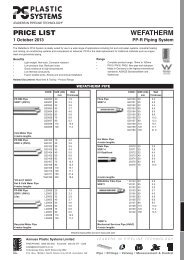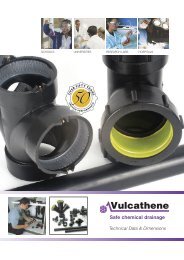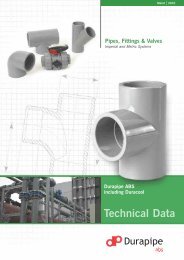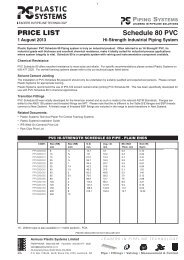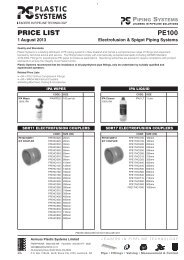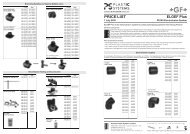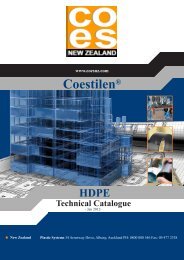Guide to Solvent Cementing PVC and CPVC Plastic ... - Glynwed Asia
Guide to Solvent Cementing PVC and CPVC Plastic ... - Glynwed Asia
Guide to Solvent Cementing PVC and CPVC Plastic ... - Glynwed Asia
Create successful ePaper yourself
Turn your PDF publications into a flip-book with our unique Google optimized e-Paper software.
17. Hold the pipe <strong>and</strong><br />
fitting <strong>to</strong>gether for a<br />
minimum of 30 seconds<br />
<strong>to</strong> eliminate movement<br />
or pushout.<br />
18. After assembly, a joint should have a ring or bead of cement<br />
completely around the juncture of the pipe <strong>and</strong> fitting. If voids<br />
(gaps) in this ring are present, sufficient cement was not applied<br />
<strong>and</strong> the joint may be defective.<br />
19. Using a rag, remove the excess cement from the pipe <strong>and</strong><br />
fitting, including the ring or bead around the socket entrance, as it<br />
will needlessly soften the pipe <strong>and</strong> fitting, <strong>and</strong> does not add <strong>to</strong> joint<br />
strength. Excess cement around the socket entrance will also extend<br />
the cure time. Avoid disturbing or moving the joint.<br />
20. H<strong>and</strong>le newly assembled joints carefully until initial set has<br />
taken place. Follow IPS Weld-On set <strong>and</strong> cure times before h<strong>and</strong>ling<br />
or hydro-testing piping system (for set <strong>and</strong> cure times refer <strong>to</strong><br />
page 22).



